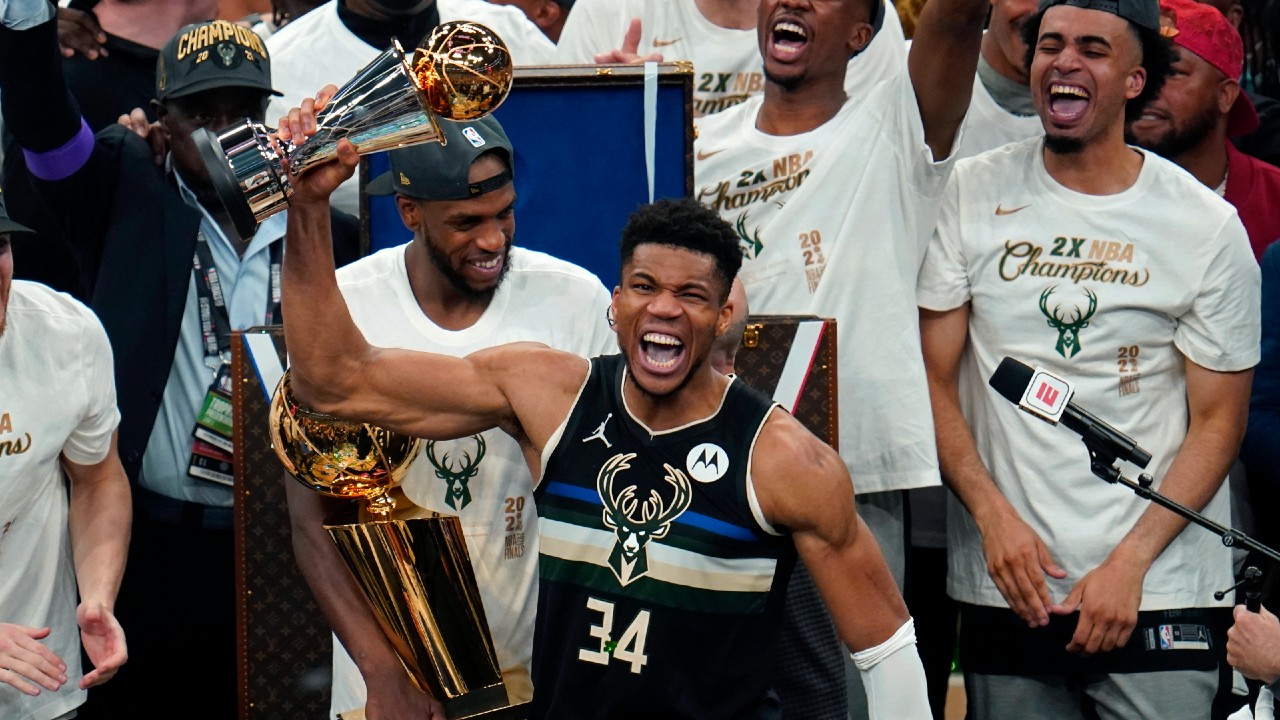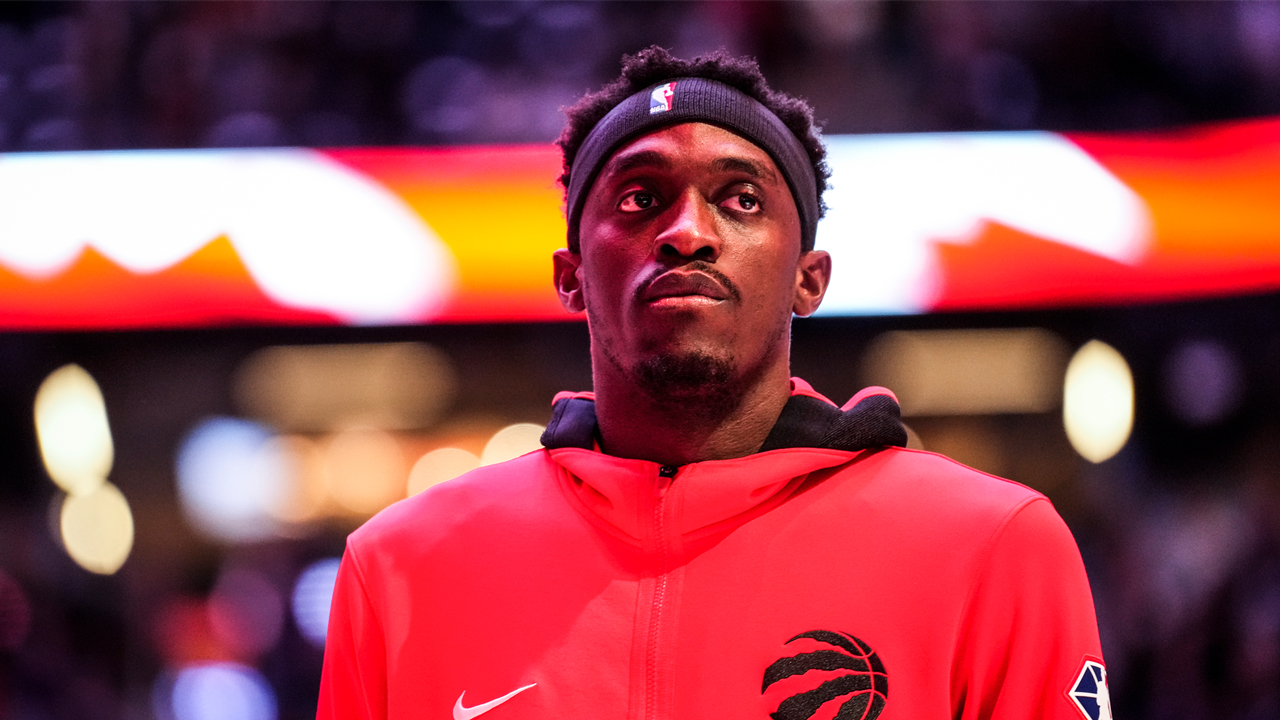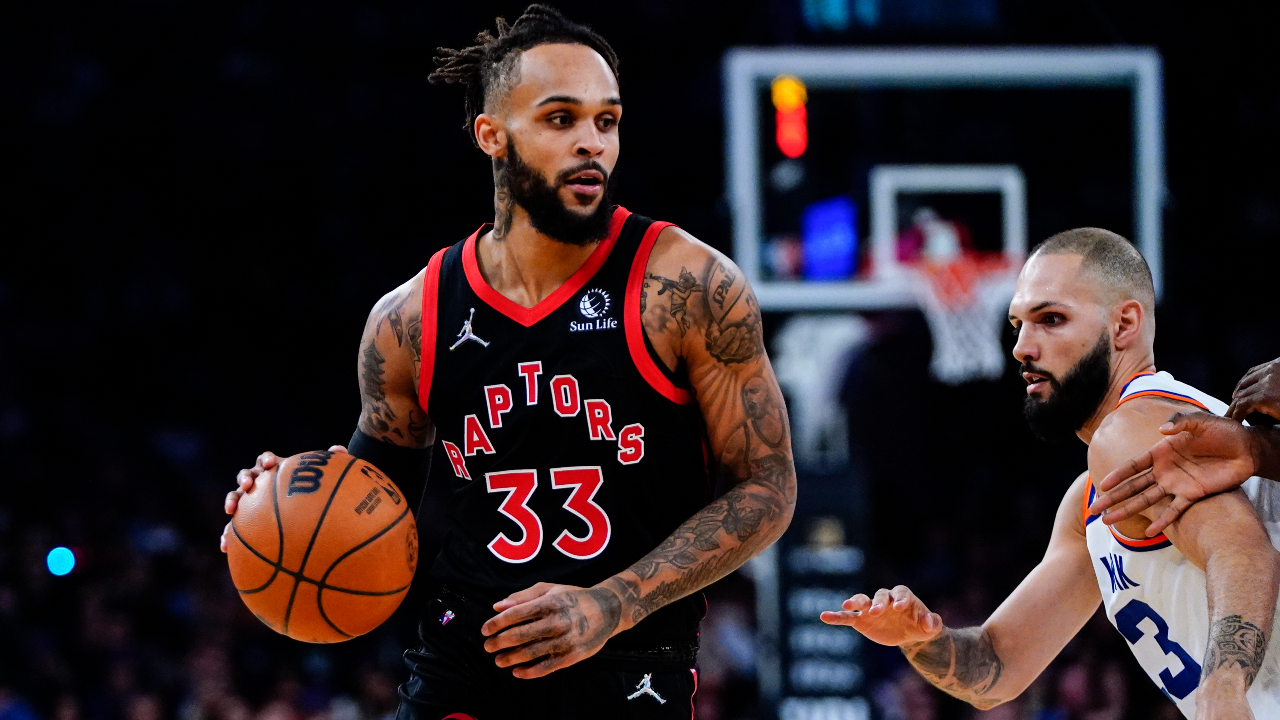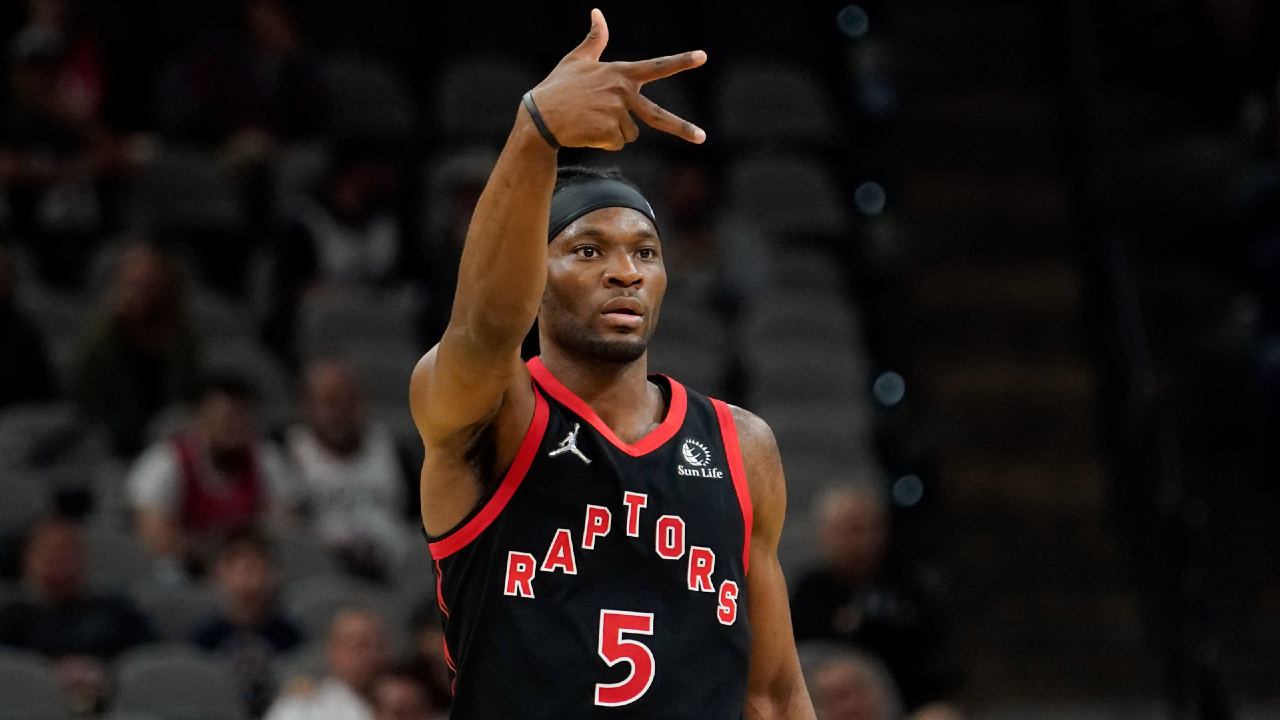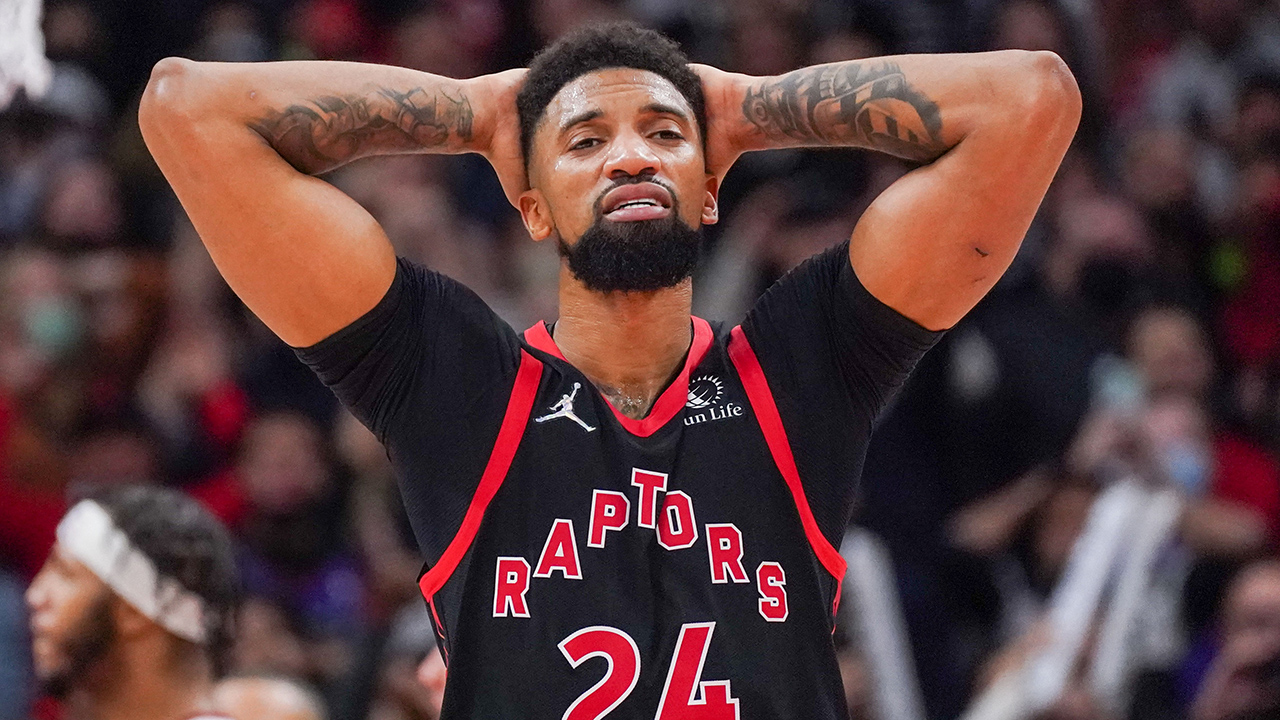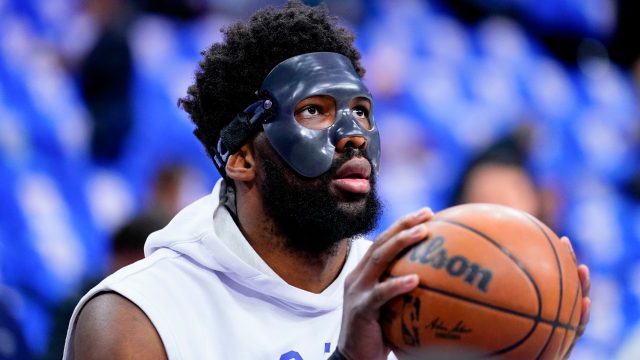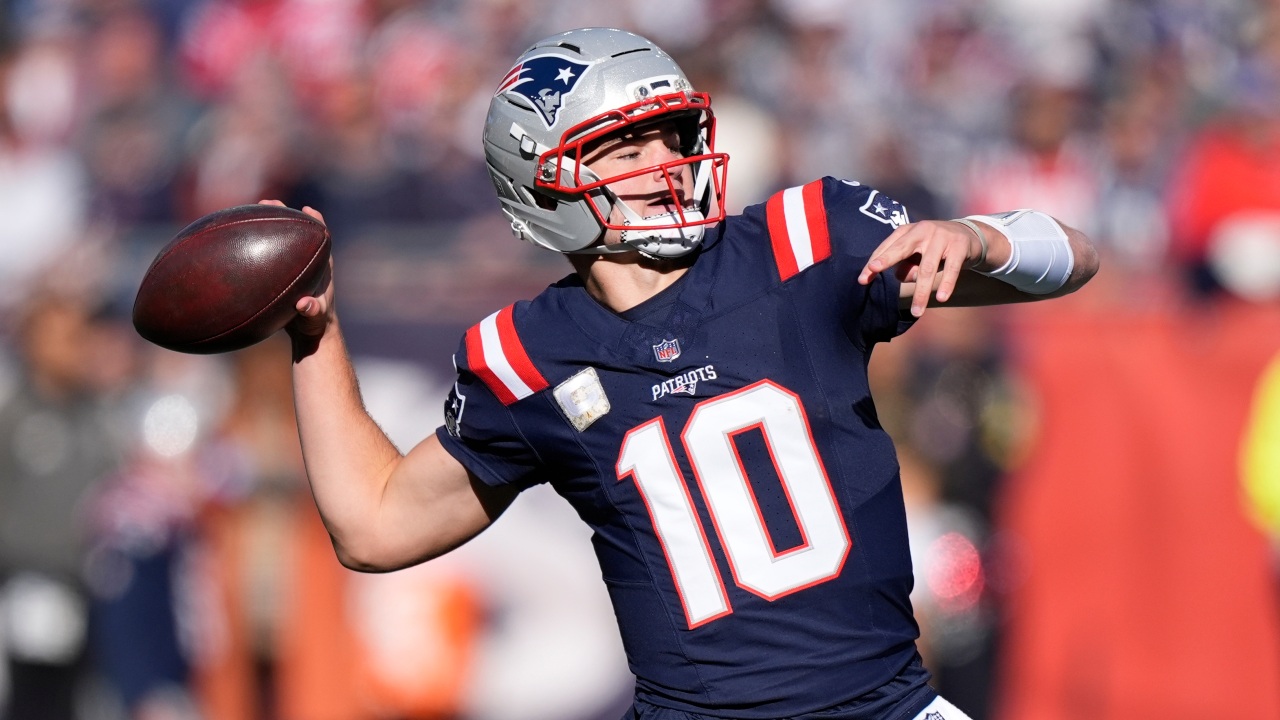
For the 22 NBA teams that are no longer playing, May is a relatively calm month.
A lot of planning and organizing goes on — co-ordinating with player agents to arrange pre-draft workouts; co-ordinating with players on off-season training and fitness plans and coordinating with the coaching staffs on off-season contact points for players — but the urgency level is low. Analysis on the season just past is being finalized, the off-season agenda is being set, and post-season vacations are being squeezed in.
Soon enough, the fun — pre-draft preparations; trade talks and free agency signings – will kick into gear. For the Toronto Raptors, by all accounts, the expectation is the off-season will be a relatively quiet one. As team president and vice-chairman Masai Ujiri said at his end-of-season media availability, “the core is the core.”
That doesn’t mean there won’t be any changes of additions. There needs to be to help off-set some of the Raptors’ demonstrable weaknesses — better shooting, depth and a reliable rim threat would go a long way to lifting Toronto into the top half of a very competitive Eastern Conference. But the first step to fixing problems is identifying what resources you have internally, so with that in mind, here are our select post-season grades for the Raptors; core, with an eye towards what they can do to take a step ahead next season.
I’ve graded players on an individualized scale, relative to their perceived potential so — for example — while Fred VanVleet might have been an all-star and Chris Boucher came off the bench, it doesn’t necessarily mean that Boucher’s grade would be lower than VanVleet’s (though it was), even if the point guard is the more crucial player.
Anyway, here we go:
Fred VanVleet, A-
One of the many questions the Raptors faced as the 2021-22 season began was how VanVleet would manage as the primary point guard without the security provided by the departed Kyle Lowry. Very well, it turns out.
Strengths: The Raptors star clearly emerged as the team’s leader off the court and set career marks for scoring (20.3) and assists (6.7) and set a franchise record for threes, knocking down 242 in 65 games. Defensively — for most of the year — he was at his pesky, anticipating best, as he finished second in the NBA in deflections per game and sixth in steals and was 25th among all guards in defensive impact, per FiveThirtyEight.com’s RAPTOR metric.
Areas to improve: Being healthy in the NBA is often a matter of luck, but there is some skill involved in being at peak health throughout a six-month season and into the playoffs. Veteran guards like Chris Paul, Lowry and — going back some — Steve Nash, made adjustments in the latter half of their careers to remain productive longer. It’s hard to blame VanVleet for struggling due to a bruised knee he suffered before the all-star break, but his season splits can’t be ignored, either. From Oct 23 to Feb 12 — a 47-game stretch — VanVleet averaged 22.1 points and 7.1 assists while making an amazing 4.1 threes a game at a 40-per-cent clip. After the all-star break it was 16.1 points a game and 5.7 assists on 29.1-per-cent shooting from deep. He wasn’t any better even with 10 days rest before the playoffs, and his season ended early with a strained hip flexor. VanVleet needs to take the next steps required — diet, training, whatever — to allow him to carry a heavier load longer in the season, and into the playoffs. The Raptors can help him by finding some depth at guard, but VanVleet has a role to play, too. On the technical side, VanVleet is not likely to become an elite rim attacker or finisher, simply due to his size and athletic profile. But can he take a page from Paul’s book and become a better shooter in the in-between spaces — from the foul line to just outside the restricted area. Paul is one of VanVleet’s role models and took nearly half of his field goals this season from three to 16 feet, converting 54 per cent from three to 10 feet, and 59 per cent from 10 to 16 feet. VanVleet shot just 30.5 per cent from three to 10 feet and 41.2 per cent from 10 to 16 feet. For a smaller guard who doesn’t get to the rim exceptionally well, mastering these areas of the floor could unlock a new element to VanVleet’s game.
Pascal Siakam, A
There was a massive cloud hanging over Siakam after the way things had gone at the end of 2019-20 and in 2020-21, and then came off-season shoulder surgery. Perhaps no single factor was going to impact the Raptors’ direction more than whether or not he could return to All-NBA form
Strengths: He played a ton of games (after returning from surgery on Nov. 11) while leading the NBA in minutes per game and producing at a higher level than ever before. From Dec. 5 to the end of the season, Siakam was one of four players in the league to average at least 23.8 points, 8.8 rebounds and 5.6 assists. And he did it while playing a high level of defence, too. The others to match those thresholds over an entire season? Nikola Jokic, Giannis Antetokounmpo and Luka Doncic. Siakam also shot 49.9 per cent from the floor and 34.9 per cent from three. He had a pair of excellent playoff games, averaging 27 points, 8.3 rebounds and 6.3 assists over the last three starts in Toronto’s first-round, six-game loss to the Philadelphia 76ers.
Areas to improve: In Siakam’s role as a primary scorer and creator, it’s not a stretch to say everything. Hey, it’s a tough job. But two areas of low-hanging fruit are his three-point shooting and mid-range scoring, and in both cases, off the dribble. Siakam shot just 25 per cent on threes taken off the dribble, albeit on a low volume. Adding the ability to stretch the defence in pick-and-roll actions would be nice. More important? Punishing defences on the fringe of the paint. Siakam was very good in the three-to-16-foot range — he shot 48.5 per cent, just behind mid-range maestro DeMar DeRozan — but Siakam shot just 37.3 from 16 feet to the three-point line. League average is 40 per cent, and DeRozan shot 46.1 per cent.
Scottie Barnes, A+
Barnes submitted the best rookie season in Raptors history by anyone other than Vince Carter, and did it as a 20-year-old, with a single season of COVID-interrupted college basketball as preparation. He played 595 minutes in college and 2,617 as a pro, leading all rookies in 2021-22.
Strengths: It’s almost impossible to list all the things Barnes did well, but a few stand out, beyond his stat-stuffing averages of 15.3 points, 7.5 rebounds and 3.5 assists on 49.2 shooting (Carter put up 18.3 points, 5.7 rebounds and 3.0 assists as a 22-year-old). Among them: the kid is tough. Whether it was bouncing back after being crushed by a Stephen Adams screen early in the season; getting knocked around by Nikola Jokic later on in the year or coming back from his sprained ankle in the playoffs, Barnes proved himself a competitor and a gamer, which are incredible traits in someone with his elite talent. On top of that, Barnes showed himself the kind of player whose best moments come spontaneously: an offensive rebound here, a no-look pass there, a timely steal or block. He moves quickly, but for him, the game moves slowly. It’s superstar stuff.
Areas to improve: There is nothing particular for Barnes to get better at outside the normal progress going from 20 to 21 should bring. He has weaknesses, but no flaws. Improving incrementally as a three-point shooter (30.1 per cent this season) and getting to the line four or five times a game (2.9 as a rookie) would allow him to approach 20 points a game. His defence will get far more consistent in his second season. His understanding of team defensive schemes will grow. The rest of his qualities are the kind that are tough to teach and should only show up more as he matures. How soon it all comes together will determine how good the Raptors can be.
Gary Trent Jr., B+
The Raptors tried to make a case for Trent Jr. as a candidate for the Most Improved Player award late in the season, and if you squinted, you could see why, The fourth-year guard set a career mark for scoring, at 18.3 points a game, assists at two per game, and steals at 1.7 per game. He was also fifth in deflections at 3.4 a game. He proved that when he chose to, he could really get into ball handlers and cause problems on the defensive end. He also showed that he can be a high-volume secondary scorer, such as the month before the all-star break when he averaged 25 points a game on 45.6 per cent three-point shooting on nearly 10 attempts a game. He also showed he is a tough-minded competitor and earned credit for his effort to play through his illness in the early stages of the Sixers series.
But in some other ways, Trent Jr. was the player he’s always been. He shot threes at 38.3 per cent (career average: 38.9) and twos at 44.5 per cent (44.7, career) and on a per-minute basis, improved only marginally in generating free throws, assists or as a rebounder. He tended to dribble too much (he ranked third among Raptors regulars in average dribbles per touch, even though he was fifth in front-court touches) and not pass enough. He’s not a selfish player, but sometimes an over-confident one.
Areas to improve: Even though Trent Jr. showed signs of being a better-than-expected on-ball defender, his team defence and off-ball awareness need to get better — it was his failure to switch that led to Joel Embiid springing free for his game-winning triple in Game 3 — but it likely will with experience. The other interesting thing to follow will be Trent Jr.’s willingness to play a more passive role as a floor-spreading, catch-and-shoot target, making his off-the-dribble, isolation attacks more of the exception than the rule. It may be a tough sell given Trent Jr. is an ambitious player, just 24 and heading into what could the final year on his current deal (he has a player option for the 2023-24 season) before potentially becoming an unrestricted free agent next summer.
Chris Boucher, B
It was hard not to feel badly for the Montrealer in the first half of the season. He had high hopes after a breakout season, but broke his finger early in training camp and was completely out of rhythm when the campaign started. Making things worse, he seemed determined to show the world how much work he’d put into shooting threes off the dribble and attacking close outs — and kept trying regardless of the results. Through Christmas he was shooting 21.3 per cent from three and offering little else to compensate. But Boucher had an epiphany after admittedly embarrassing himself with his failed Kevin Durant impression while the Raptors were short-handed against Cleveland on Boxing Day (he was 6-of-19 with five turnovers): what if he just ran the floor really hard, was a pest defensively, assaulted the offensive glass and took the odd catch-and-shoot three when open?
Strengths: Turns out Boucher is very good with a less-is-more approach. Over the last 52 games of the season, he averaged 10 points and seven rebounds a game (2.5 on the offensive end) in 23 minutes off the bench and his three-point shooting was close to league average.
Areas to improve: Honestly? Not much. Boucher shot 38.3 per cent from three in 2020-21, so if he could return to that level it would be welcomed, but at 29 Boucher has learned how effective he can be as a high-energy role player. Continuing to accept and thrive in that role will be the key to the Raptors retaining the pending free agent.
Precious Achiuwa, B
This grade would be higher if the player acquired from the Miami Heat in the sign-and-trade for Lowry had played even passably in the early stages of the season. He went long stretches struggling to catch, finish at the rim or be part of basic basketball plays — executing a fast break, for example. Through the first six weeks of the season, he was — impossibly, given his size and athletic ability — shooting just 50 per cent inside three feet (worst among Raptors regulars); 36 per cent elsewhere in the paint and was 1-of-17 in the mid-range. But give Raptors head coach Nick Nurse credit: Achiuwa’s defensive impact was positive, and he saw the obvious athletic potential and stuck with him.
Strengths: The Raptors were rewarded with a different player in the second half of the season. He began finishing better (63 per cent in the restricted area) and — almost out of nowhere — became a passable three-point shooter, connecting on 41 per cent of his attempts from the right corner and 42 per cent on 69 attempts from above the break. He showed some skill attacking the rim and — the odd adventure aside — looked like a much more comfortable piece in the greater whole of the offence. Defensively, his ability to switch from bigs to smalls and back again made Achiuwa a worthy complement to OG Anunoby and Siakam in the Raptors’ fluid schemes. But on the whole, Achiuwa has emerged as a legitimate swing piece for the franchise — if he continues his trajectory from the second half of the season, the Raptors’ depth issues clear up quickly.
Areas to improve: Achiuwa’s skills need to grow, and he needs to prove that his three-point shooting is for real. But more importantly his mindset needs to develop. He needs to play a lot of high-end pick-up basketball with the ball in his hands to — hopefully — grow his feel for the game. Remember how Siakam used the UCLA summer runs to turn himself into an NBA playmaker prior to his third season? Something like that.
OG Anunoby, incomplete
Anunoby had moments this past season when you could see him approaching the considerable ceiling offered by his rare set of talents; when he looked every inch the type of elite, two-way wing that teams need to win championships. You just wished there were more of them.
Strengths: There was, of course, the first three games of the Sixers series, when he averaged 24 points a game, shot 47.6 per cent from three, chipped in three assists and defended everyone from Embiid to Tyrese Maxey. There was a 13-game stretch in October and November, before he left the lineup with a hip injury, where he averaged 21.3 points a game and shot 39.8 per cent from deep and picked up the slack offensively while Siakam was out of the lineup. He showed some improved ability to create his own shot — only 61.5 per cent of his makes were assisted this season, a career low and down from 70.3 per cent last season , and the guy who fell down on drives as often as he finished them in years past shot a team high 71 per cent at the rim, with nearly half of his makes coming on unassisted plays. Why the incomplete grade? Anunoby played just 47 games, which is part of trend: he missed 29 a year ago, 13 the year before that and 15 before that. His injuries tend to be one-offs, but it was easy to sense some frustration from Nurse with how long Anunoby took to return from a fractured finger, Anunoby played through it at first, then sat out 15 games with, and then played with it again looking like he hadn’t missed a beat.
Areas to Improve: Whether it’s fitness, mindset or finding a superstition that works, the biggest improvement Anunoby can make for 2022-23 is playing something in the range of 70-75 games. It would help his development, help the Raptors maximize the potential of ‘vision 6-foot-9’ and would allow Anunoby to gain all-Defence consideration. Offensively his next step is to tighten up his mid-range game. He’s got a fairly tidy shot spectrum — 71.7 per cent of his attempts were at the rim or from three — but he’s otherwise too easy to defend: run him off the line and he’s lost. He shot just 34.5 from the restricted area out to the three-point line and 29.9 per cent on all pull-ups. A passable in-between game to go along with his improved dribble drives and reliable three-point shooting — along with some good health — could help Anunoby make the jump from valuable role player to potential star.
THE REST
Khem Birch, C-
There was a glimmer of hope that Birch would become a passable three-point shooter based on him flirting with the distance after he joined the Raptors last season from Orlando. It might have unlocked some options offensively, but Birch didn’t lean into it this past season. It was a frustrating year for the veteran big as he struggled with a couple of bouts with COVID-19, what seems to be a chronic knee problem and a broken nose. He’s a good screen setter, passes the ball well out of the short roll and is a quality team defender, but heading into his age-30 season, if he ends up starting 28 games for the Raptors, it won’t be a good sign.
Dalano Banton C+
He fell out of the conversation a bit as Nurse’s rotation got tighter as the season went along, but the rookie from Rexdale might be the Raptors’ most intriguing development piece. He has got great size and seems comfortable playing with tremendous pace. He had some flashes when he did get minutes as a rookie, but perhaps more encouragingly, averaged 24 points and nine rebounds a game with 39 per cent three-point shooting to go along with a 2:1 assist-to-turnover ratio in seven G-League appearances. Shooting 54.5 per cent from the free-throw line can’t be tolerated for a point guard, but a big development summer could earn Banton a rotation spot in a Raptors lineup that lacks point guard depth. That should be his goal.
Malachi Flynn, D
A borderline disastrous season for the second-year guard. He was the only other true point guard on the roster, but never earned Nurse’s trust, and when he finally showed some life — a four-game run after the all-star break when VanVleet was injured, where he averaged 16 points a game on 55-per-cent shooting and had 22 assists and just one turnover – he pulled his hamstring and was out for 16 games. Bigger picture, there seems to be a disconnect between the way Nurse wants him to play — a high-energy terrier on defence and an up-tempo pace setter on offence – and how Flynn is comfortable playing, and that he’s shot just 38 per cent from the floor as a pro doesn’t help Flynn’s argument to do things his way. He did himself no favours with some desultory G-League performances as well. Flynn will have to figure out how to carve his way into an NBA rotation as a backup point guard in season three or be looking for another league to play in.
Thad Young, B+
Once he became acclimatized to the Raptors’ way of playing, the 15-year veteran was as advertised: a versatile, high IQ, high character player who still has some bounce left in his soon-to-be 34-year-old legs. A pending free agent, he could be worth signing just for the positive influence he provides the likes of Achiuwa and the locker-room resource he provides the likes of VanVleet and Siakam.
Svi Mykhailiuk and Yuta Watanabe, C-
I’ll lump them together because they share similar profiles as young veterans who project as useful role players on a depth-starved team, yet never grabbed the opportunities they were presented. It’s not always fair, but it’s the difference between having an NBA career and not: the ability to make open shots at the drop of a hat. They combined to shoot 31.9 per cent from three. Mykhailiuk will be back as he has a player option he’ll pick up, and the Raptors do like Watanabe, but there’s no guarantee they’ll hold a roster spot for someone who will be 28 next season, and still unproven.
Justin Champagnie, Isaac Bonga, Armoni Brooks, and David Johnson, Incomplete
Champagnie and Johnson were on two-way contracts while Bonga won a camp battle with Sam Dekker for the Raptors final roster spot. They each spent most of their season with Raptors 905 with Champagnie making the most of his time there as he shot 40.9 per cent from deep on 6.3 attempts a game — an essential skill if he’s going to establish himself as a space-and-D threat at the NBA level. There were conservations about converting his two-way deal into a regular contract, but the Raptors opted to use their roster spot on Brooks as some shooting depth for the playoffs. He has a light roster guarantee for next season, and the most likely scenario is the Raptors use the summer and training camp to evaluate Champagnie, Brooks, and Johnson as part of a large pool of training camp invitees prior to next season.


